한식 읽기 좋은 날
On-Site Report from the
Wonderful Scenes of HANSIK
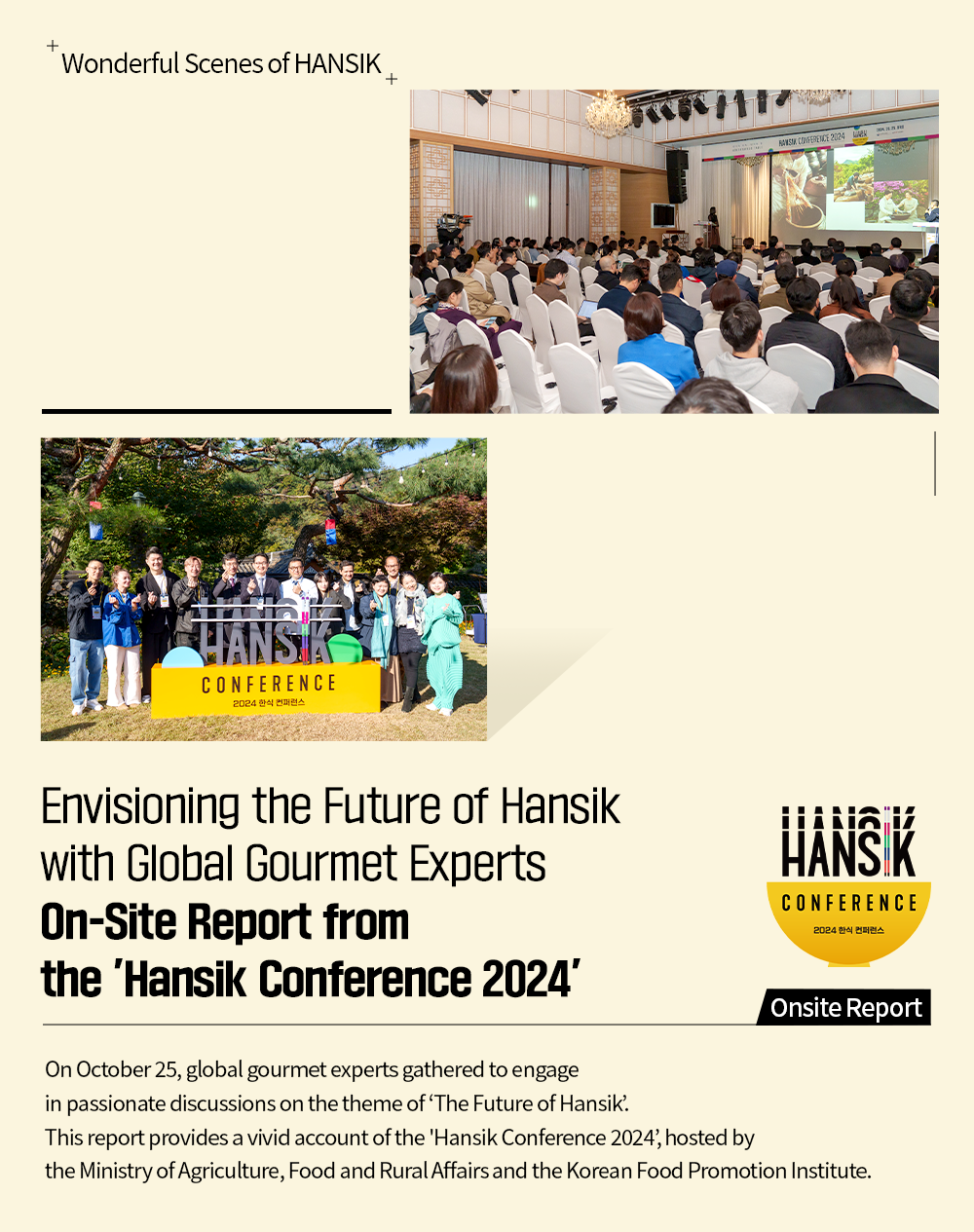
On a warm, sunny autumn day, renowned chefs and gourmet experts from both Korea and abroad gathered at Samcheonggak in Seongbuk-gu, Seoul.
On October 25, the Ministry of Agriculture, Food and Rural Affairs and the Korean Food Promotion Institute held the Hansik Conference 2024, creating a meaningful opportunity to discuss global strategies for Hansik. The event, which was also attended by Hansik Magazine, was filled with deep conversations and passion as participants explored ways to expand the value of Hansik, including Korea's rich jang culture, on the global stage.
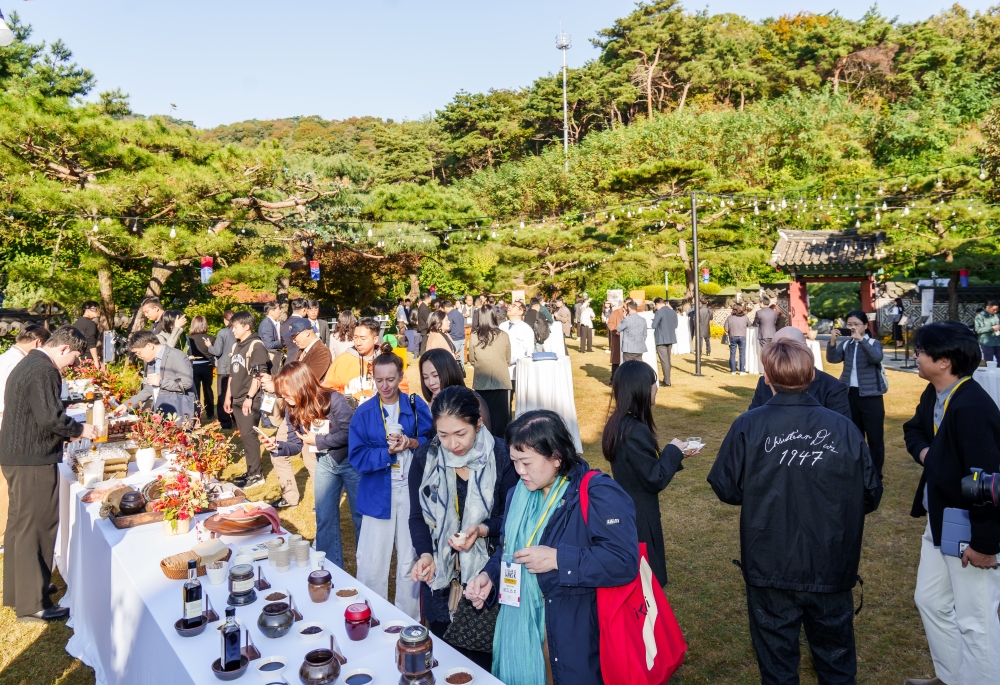
Discussion on the Future of Hansik
This year marked the second edition of the event, following last year’s success. With the theme ‘Adventurous Table: HANSIK’, the gathering aimed to re-examine the value and identity of Hansik and discuss global strategies. The venue was bustling with over 200 global gourmet experts, chefs, media representatives, and stakeholders from the restaurant industry, reflecting the high level of interest in Hansik.
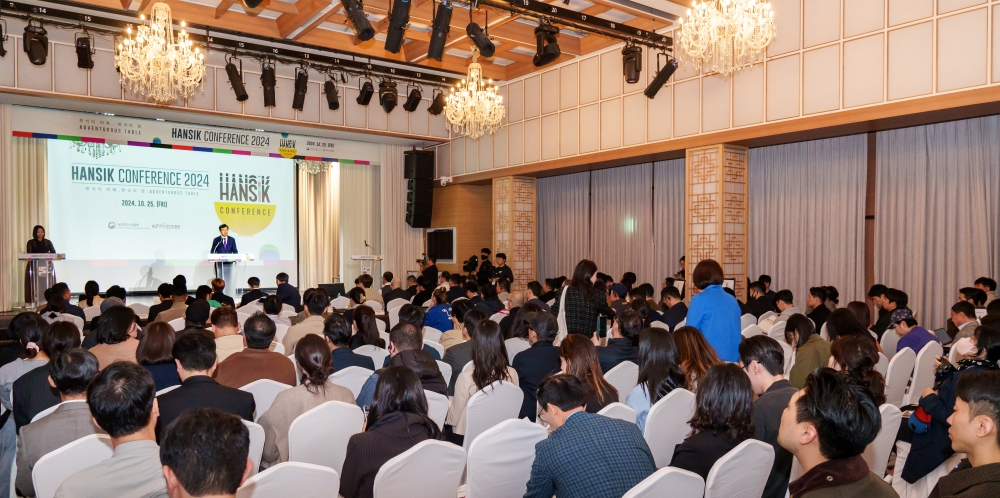
One restaurant industry representative noted, “As Hansik gains attention as a global culinary trend, I attended to gain various strategies and insights. With industry experts coming together, I expect fruitful discussions to take place.”
Rediscovering the Core of Hansik: Jang
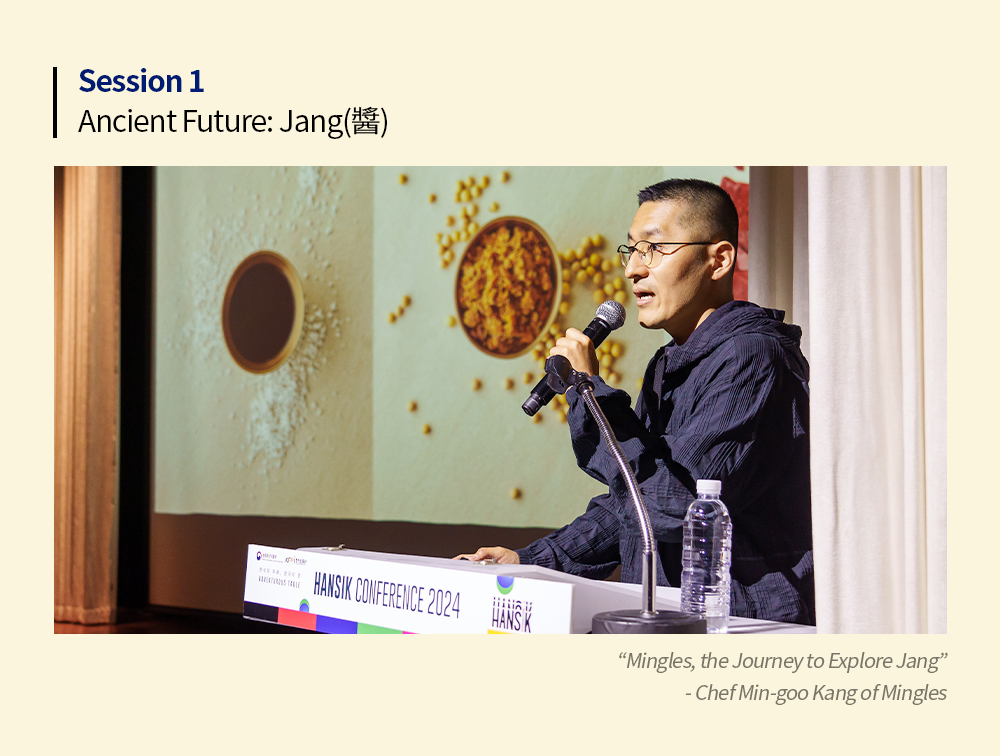
The first session began with a presentation by Chef Min-goo Kang of the Michelin 2-star restaurant Mingles. Chef Kang, who showcases a variety of dishes based on Korean jang (fermented sauces), captured attention by explaining the processes involved in making fermented sauces like doenjang (soybean paste), ganjang (soy sauce), and gochujang (red chilli paste), along with their unique flavors. He particularly emphasized the value of jang, stating, “Just as one cannot discuss French cuisine without butter or Italian cuisine without olive oil, jang holds great significance in Hansik and Hansik culture.”
He then introduced Mingles' signature dishes made with jang, stating, “Korean jang can enhance the flavors of not only traditional Hansik but also various international cuisines and desserts.” His explanation of desserts that creatively utilize jang, such as ganjang pecan pie, doenjang crème brûlée, and gochujang twibap (puffed rice), garnered particular interest. Chef Kang described examples of combining jang with dairy products, explaining that “the saltiness, spiciness, and strong flavors of jang can harmonize beautifully with the sweetness of desserts, resulting in a well-balanced overall taste.”
Exploring the Future of Hansik: Fostering Future Talent and Global Hansik Business
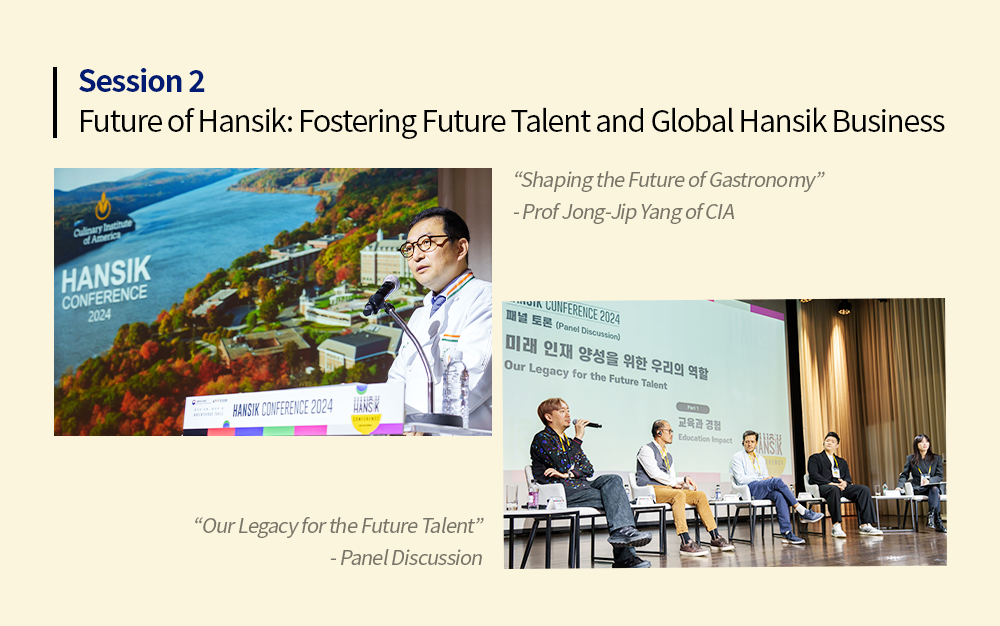
In the second session, discussions focused on cultivating future talent and the global Hansik business for the sustainable growth of Hansik.
Professor Jong-Jip Yang from the Culinary Institute of America (CIA) emphasized the importance of specialized education for Hansik, stating, “The globalization of Hansik can achieve meaningful progress not only through the efforts of individual restaurants but also by starting from a systematic educational curriculum.”
Continuing, Professor Yang said, “In a survey conducted among CIA students, over 70% indicated they would enroll if there were a Hansik education program,” noting that interest in Hansik is rapidly increasing even in the U.S. He added, “If a comprehensive Hansik education program that incorporates the Korean language, culture, history, and traditions were established, it could cultivate numerous Hansik talents around the world.” He emphasized that nurturing talent is essential for the globalization of Hansik.
One participant who attended the presentation remarked, “I could really feel the heightened interest in Hansik in the U.S. It would be great to see more opportunities for specialized Hansik education abroad.”
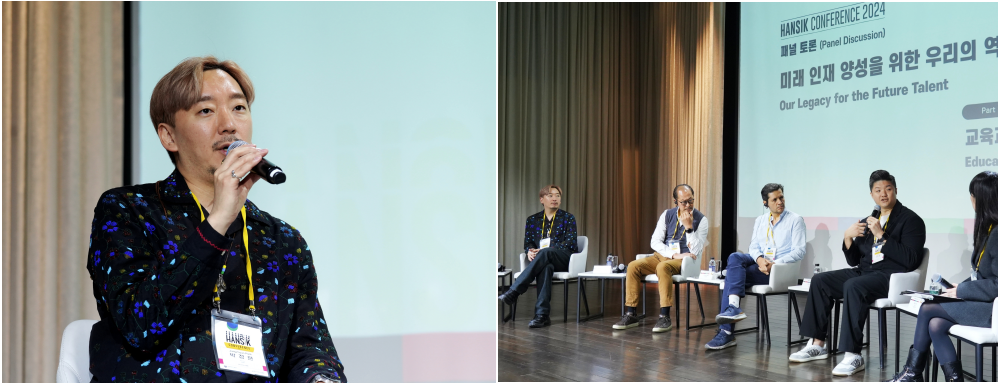
In the subsequent panel discussion, renowned chefs leading the global culinary industry engaged in a lively debate on the topic of ‘Our Legacy for Future Talent’ Chef Jung-Hyun Park of Atomix, a Michelin 2-star Hansik restaurant that ranked 6th in the 2024 World’s 50 Best Restaurants, noted, “Currently, Hansik in the U.S. is a special dining experience enjoyed by those interested in Korean culture. Now is the time to consider what efforts are needed for it to become a part of everyday dining.” Chef Park expressed agreement on the necessity of Hansik education, emphasizing that education and experiences that allow for a deeper understanding of Hansik are crucial for its sustainable growth.
Chef Jimmy Lim, who leads the Michelin 3-star restaurant JL Studio in Taiwan, expressed, “I want to be a role model for young chefs by inspiring them through communication.” He emphasized the importance of actively engaging with junior chefs. Following Lim, Chef Jorge Vallejo of the Michelin 2-star restaurant Quintonil in Mexico stated, “The history of a country and its local ingredients are key to shaping the identity of its cuisine,” highlighting the significance of tradition and locality as powerful connections between cooking and culture.
Experiencing the Charms of Hansik through the Five Senses
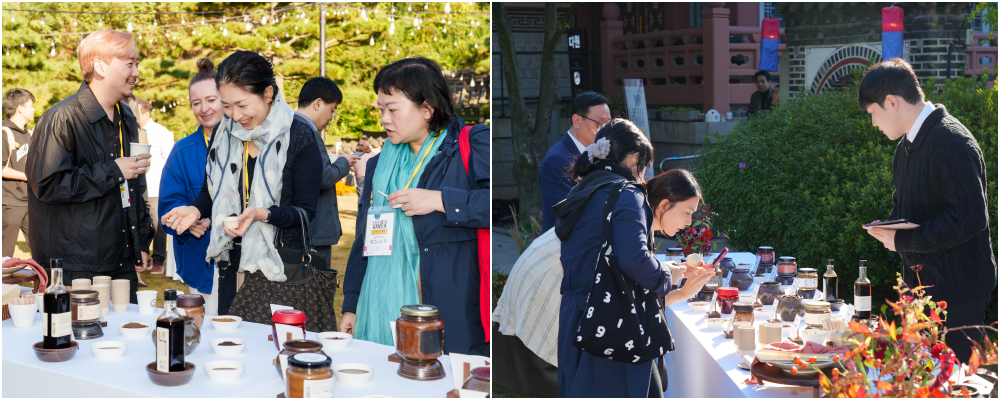
The event grounds were filled with various experiential programs that kept participants engaged. In particular, the ‘Jang Experience Zone’, set up in anticipation of Korea’s upcoming UNESCO designation of its jang fermentation culture, attracted the most attention. Participants marveled at 14 types of traditional jang, including doenjang, ganjang, and gochujang, from seven ancestral homes, tasting and appreciating Korea's unique jang culture. The catering zone, featuring a variety of Hansik menus and desserts made with jang, was also bustling with people and received an enthusiastic response.
The photo booth attracted various participants, including famous chefs who recently appeared on the Netflix show ‘Culinary Class Wars’ making it a popular spot. Additionally, souvenirs were provided to participants who responded to the conference satisfaction survey, adding to the enjoyment of the event.
Hansik Leapt Toward Global Stage
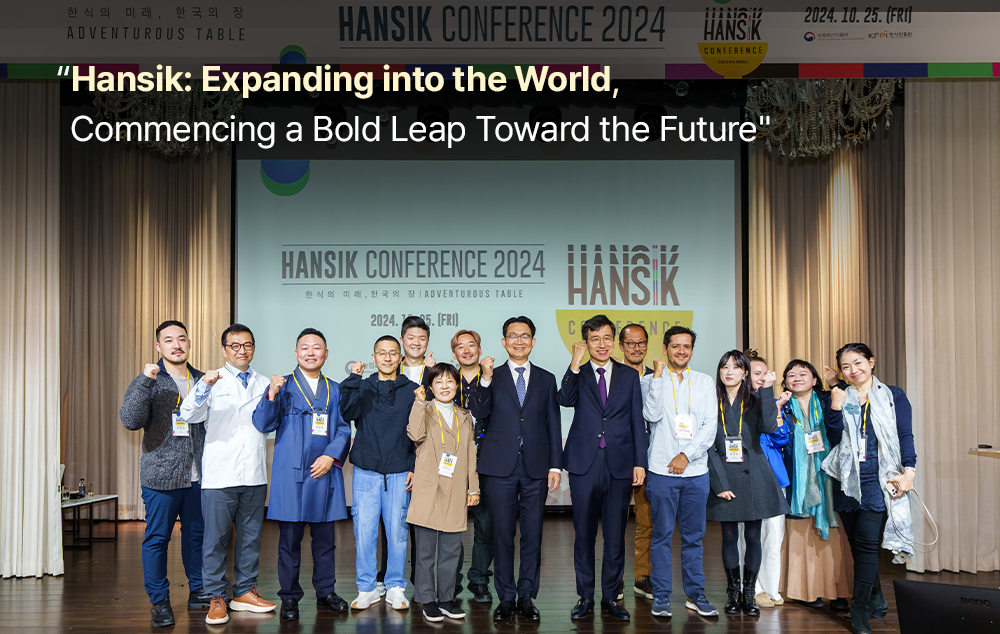
As global interest in Hansik continues to rise, the number of tourists visiting Korea to experience Hansik firsthand is also steadily increasing. The Hansik Conference 2024 was a meaningful occasion for sharing diverse opinions on how Hansik can transcend temporary trends and establish itself in the daily lives of people throughout the world.
We hope that this conference will serve as an important stepping stone for spreading the value of Hansik globally.

 한국어
한국어
 English
English






